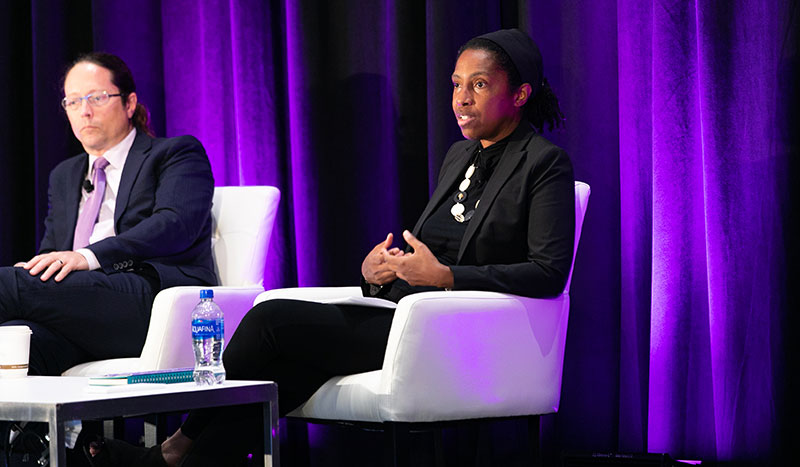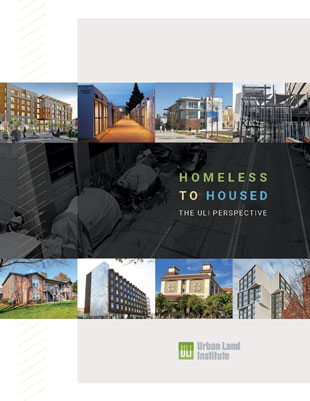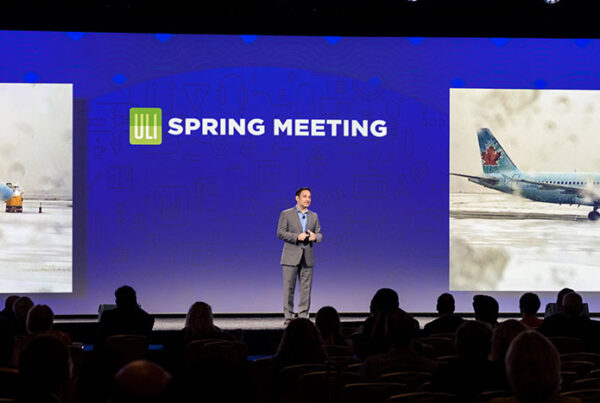
At right, Angela Kyle, executive director of PlayBuild NOLA, a nonprofit group that works to transform underused neighborhood spaces and advocate for child-friendly design, discussing her work with Casius Pealer III, director of Tulane University’s Sustainable Real Estate Development program, at the ULI Fall Meeting in Chicago.
Making cities such as New Orleans more child-friendly requires rethinking mobility infrastructure, providing more access to public transit, and bringing together a variety of stakeholders—including young people—into the planning process, according to panelists on the “Child-Friendly New Orleans: Designing the Future” concurrent session at the 2021 ULI Fall Meeting in Chicago.
In recent years, New Orleans has become a laboratory of sorts for planning child-friendly infrastructure, thanks in part to Mayor LaToya Cantrell’s creation of the Office of Youth and Families, said Angela Kyle, executive director of PlayBuild NOLA, a nonprofit group that works to transform underused neighborhood spaces and advocate for child-friendly design. The city has brought together a range of stakeholders, including city agencies, nonprofit entities, and community activists, among others, to take a holistic approach.
One focus is improving children’s mobility so that they can get to parks, libraries, and play areas safely without having to be accompanied by adults, said James Francisco, a senior urban designer and planner for Arup, which has contributed concepts to the city’s effort. Widening bike lanes and adding buffers to provide more protection from traffic can make them more child-friendly, he added.
Laura Bryan, director of the New Orleans Office of Transportation, said that lowering youth fares for public transit also improves access. Bryan cited the importance of mapping out access routes that child pedestrians use in neighborhoods and eliminating blight along them. “It’s one thing to be an adult walking down a street past places where the weeds are six feet high,” she explained. “It’s another to be three feet tall and walking down that street.”
Arup senior urban designer and planner James Francisco mentioned the idea of closing certain streets to vehicles during the day and converting them to safe recreational spaces for children, complete with activity programming and play equipment such as Frisbees.
Casius Pealer III, director of Tulane University’s Sustainable Real Estate Development program, said the city’s inclusion of children in planning sessions helped adult leaders to focus upon their needs. In addition, “twenty years from now, those kids are going to be adults,” he said. “I want them to have the capacity to be involved in these thoughtful discussions.”



